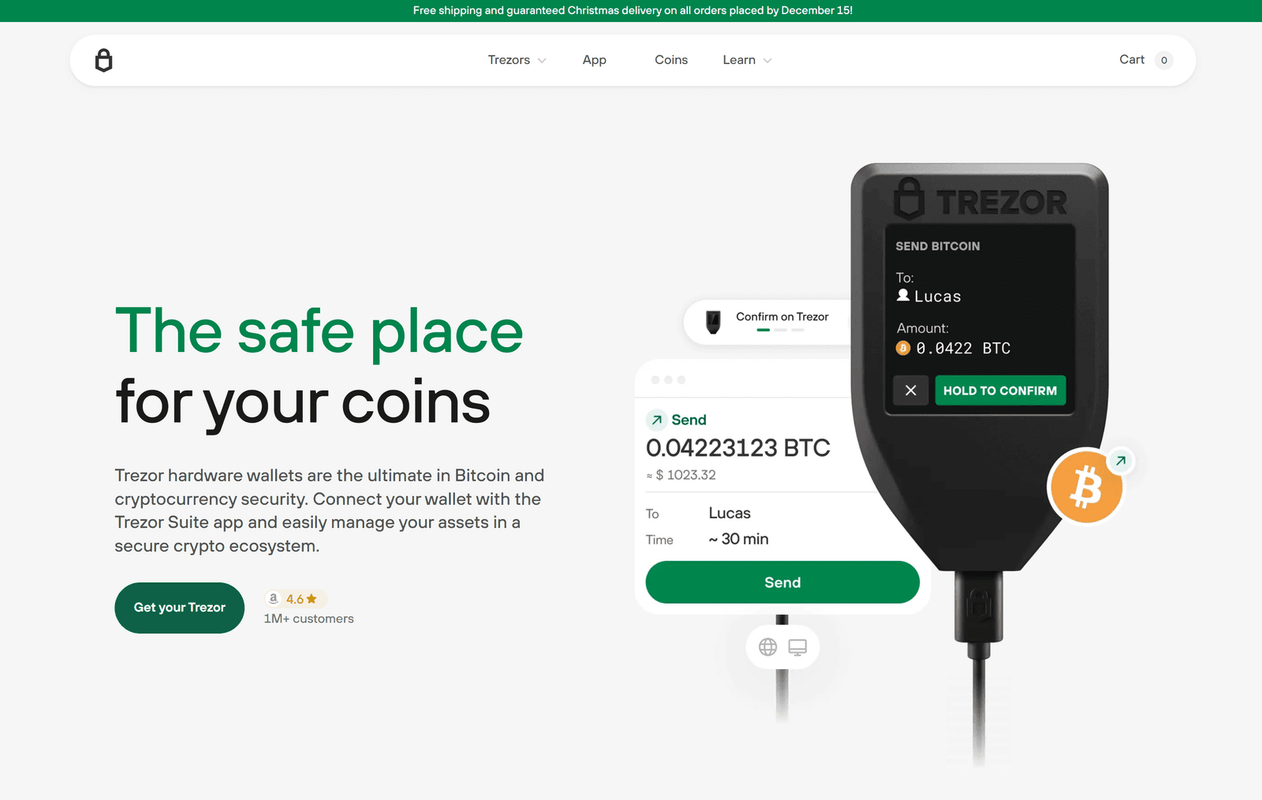Trezor Bridge Download Guide

Trezor Bridge serves as the essential gateway connecting your Trezor hardware wallet to your computer and web applications. In the evolving landscape of cryptocurrency security, understanding and properly installing Trezor Bridge is crucial for seamless device management. This guide provides a comprehensive overview of what Trezor Bridge is, why it's vital, and step-by-step instructions for downloading and setting it up.
What is Trezor Bridge?
Trezor Bridge is a lightweight background service designed to facilitate secure, encrypted communication between your Trezor hardware device and various wallet interfaces, including browsers and desktop apps. Unlike browser extensions, which can be vulnerable to attacks, Trezor Bridge operates independently, adding an extra layer of isolation and protection. It ensures that sensitive data, such as private keys, never leaves your hardware device, aligning with Trezor's commitment to open-source security.
Originally released as a standalone application, Trezor Bridge has evolved. As of recent updates, it is now integrated directly into the Trezor Suite application, eliminating the need for separate downloads in most cases. This integration streamlines the user experience while maintaining robust functionality. The bridge handles USB or WebUSB connections, automatically detecting your Trezor device (like Model T or Safe 3) and enabling features such as transaction signing, firmware updates, and asset management.
Why Do You Need Trezor Bridge?
In the world of hardware wallets, direct browser access to USB devices is limited due to security restrictions imposed by modern operating systems and browsers. Trezor Bridge bridges this gap—pun intended—by acting as a trusted intermediary. Without it, you couldn't interact with your Trezor device through web-based interfaces like Trezor Suite Web.
Key benefits include enhanced privacy, as it prevents direct exposure of your device to potentially malicious websites. It supports cross-platform compatibility, working flawlessly on Windows, macOS, and Linux. For users managing diverse portfolios, including Bitcoin, Ethereum, and altcoins, Trezor Bridge ensures smooth synchronization, real-time balance checks, and secure backups. In an era where phishing and malware threats are rampant, relying on official tools like this is non-negotiable for safeguarding your digital assets.
How to Download and Install Trezor Bridge
Downloading Trezor Bridge is straightforward, but always prioritize official sources to avoid counterfeit software. Note that standalone Trezor Bridge is deprecated; the recommended approach is via Trezor Suite.
- Visit the Official Website: Navigate to trezor.io/trezor-suite. This is the sole trusted source for downloads.
- Select Your Platform: Choose the installer for your OS—Windows (.exe), macOS (.dmg), or Linux (.deb or .rpm packages).
- Download Trezor Suite: Click the download button. The Suite app bundles Bridge, so no separate file is needed. File sizes vary: around 100MB for Windows/macOS.
- Install the Software: Run the installer and follow on-screen prompts. Grant necessary permissions for USB access. On Linux, you may need to install dependencies like libusb via your package manager.
- Verify Installation: Launch Trezor Suite. Connect your device; Bridge should auto-start. Check status at http://127.0.0.1:21325/status/. If accessible, it's running.
For web-only use, access suite.trezor.io/web/bridge/, but desktop installation offers superior security.
System Requirements and Troubleshooting
Trezor Bridge (via Suite) requires minimal specs: Windows 10+, macOS 10.15+, or Ubuntu 20.04+ equivalents. Ensure USB 2.0+ ports and updated drivers. It demands about 200MB disk space and a stable internet for initial setup.
Common issues? If detection fails, verify USB cable integrity—use the one bundled with your Trezor. Restart Bridge via Suite settings. For Linux users, run sudo apt install libusb-1.0-0-dev. On Windows, disable antivirus temporarily during install. If errors persist, consult Trezor's support forum or reset your device (back up first!).
Deprecated standalone Bridge? Uninstall it to prevent conflicts: On Windows, run uninstall.exe from Program Files; macOS via Applications; Linux with sudo apt remove trezor-bridge. Transitioning to Suite ensures future-proof compatibility.
Conclusion: Secure Your Crypto Today
Installing Trezor Bridge through Trezor Suite not only simplifies your workflow but fortifies your defenses against cyber threats. With its seamless integration and unwavering reliability, it's a cornerstone of responsible crypto ownership. Download now from the official site, connect your device, and take command of your financial sovereignty. Remember, in crypto, security is paramount—don't compromise.
(Word count: 512)